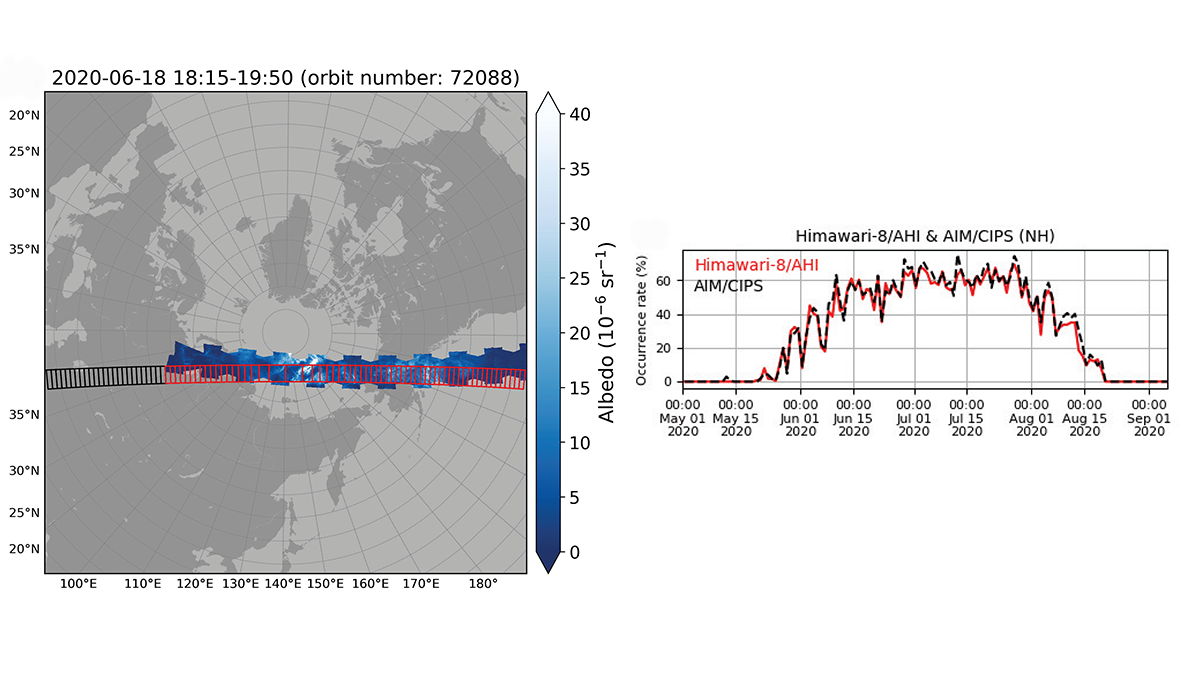Editors’ Highlights are summaries of recent papers by AGU’s journal editors.
Source: Earth and Space Science
The summer mesopause (about 80-90 kilometers) is the coldest place in Earth’s atmosphere and the place where the highest clouds called Polar Mesospheric Clouds (PMC) or Noctilucent Clouds (NLC) occur predominantly at high latitudes. The occurrence and variability of PMC may be linked to global change and, therefore, long-term monitoring of PMC is of special interest. NCL can be observed from the ground depending on the weather and with limited spatial coverage but high spatial resolution, while observation from space provide continuous and large spatial coverage.
Tsuda et al. [2022] apply a new PMC detection technique to the Advanced Himawari Imager (AHI) onboard the Japanese geostationary-Earth26. The two-step approach is dividing the PMC detection into stronger (the first step) and weaker (the second step) signals and enhances the detection capability while significantly decreasing the false PMC detections. The improved PMC sensitivity by Himawari-8/AHI shows excellent agreement with the Cloud Imaging and Particle Size (CIPS) onboard the Aeronomy of Ice in the Mesosphere (AIM) satellite and provides a new data set for PMC studies.
Citation: Tsuda, T. T., Hozumi, Y., Kawaura, K., Tatsuzawa, K., Ando, Y., Hosokawa, K., et al. (2022). Detection of polar mesospheric clouds utilizing Himawari-8/AHI full-disk images. Earth and Space Science, 9, e2021EA002076. https://doi.org/10.1029/2021EA002076
—Astrid Maute, Editor, Earth and Space Science

